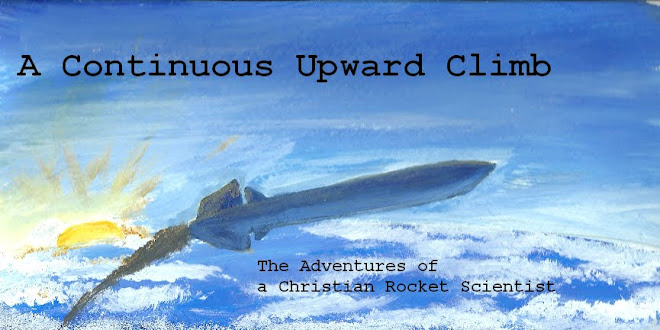The first official flight should have been REALLY SUPER GOOD. We had a 47 second flight time, but our altimeter reported an unrealistic 270 feet. It was a beautiful flight, and had our atimeter worked properly, we would've started packing for D.C. But it didn't. The officiator is going to contact Trip Barber of the NAR to see if we can get a re-do flight for that one. I hope we do, but if not, we can be proud of the good job we did.
The second flight wasn't as good, but at least the altimeter worked. We only got 681 feet, so the flight time was only 33 seconds, disqualifying us for that flight. Also, the streamer dropped like a rock, which is unexplainable since it was exactly the same streamer.
We're hoping for a re-do flight for a chance to prove ourselves! Go Andover!
From left: Me, Sam, Phil, Matt
Me, climbing the tree to get the egg capsule/altimeter down.
Rocket Team at work
Me and my family are going out of town over spring break. We're driving all the way down to Florida to visit a college, Embry-Riddle Aeronautical University, where I hope to enroll in the fall as an aerospace engineering student. It's going to be a very informative visit.
We happen to be down there at the same time NASA will be launching its fourth to last shuttle flight ever, April 5th. Since I've never seen a shuttle launch in person before, I never will unless I do on this trip. NASA is retiring the shuttle this year.
If I'm not able to blog on the trip, expect an exciting post filled with adventures on April 7th!













